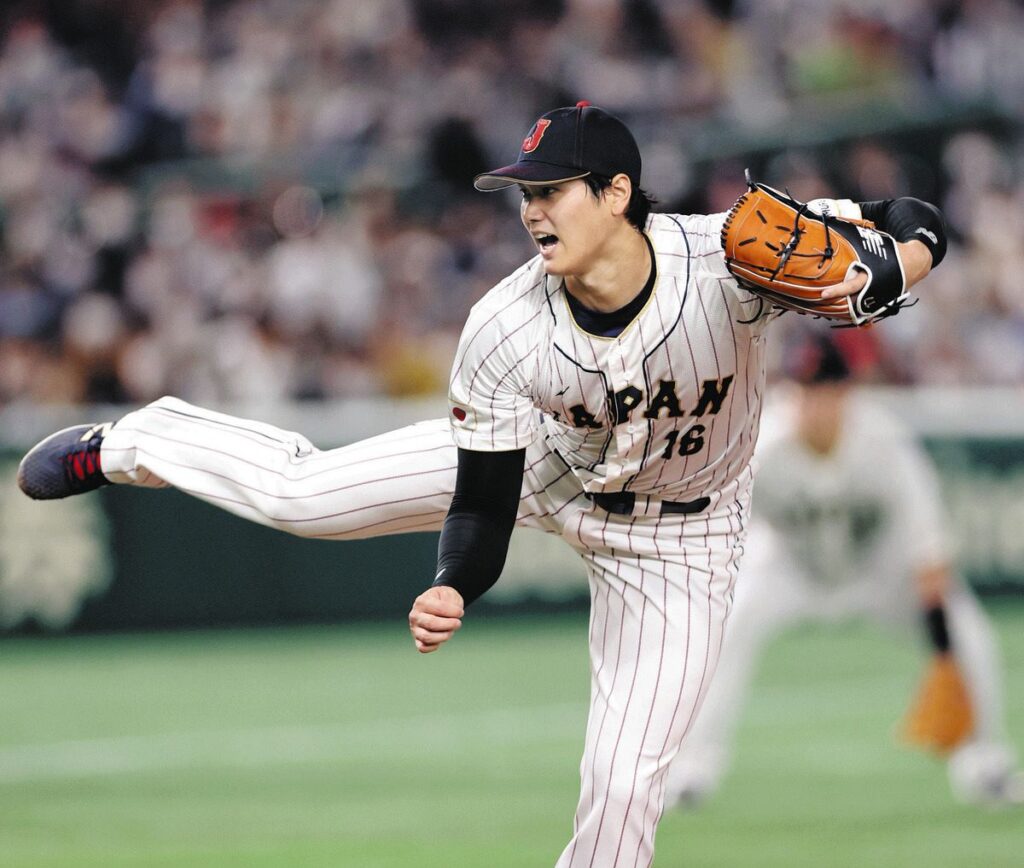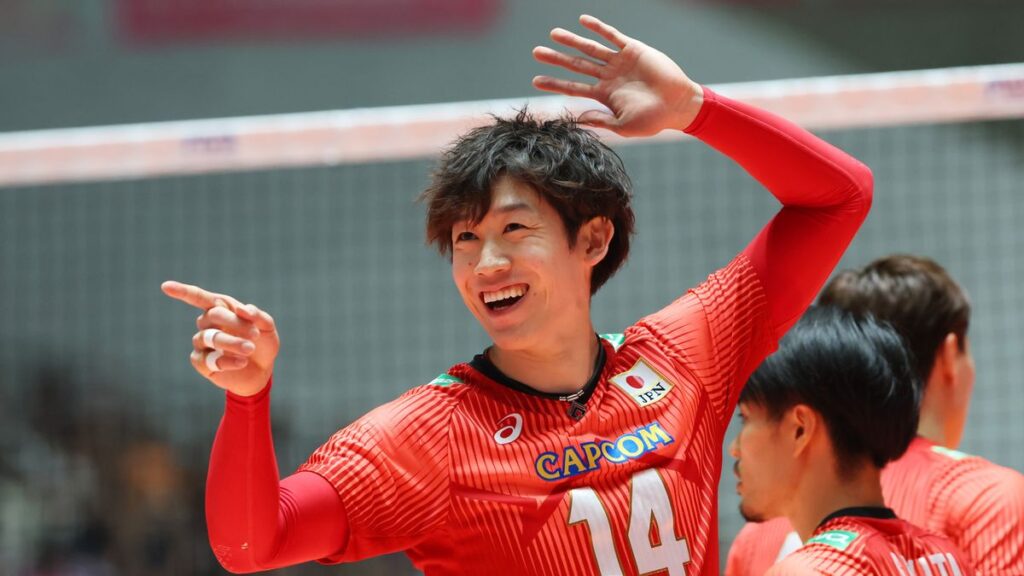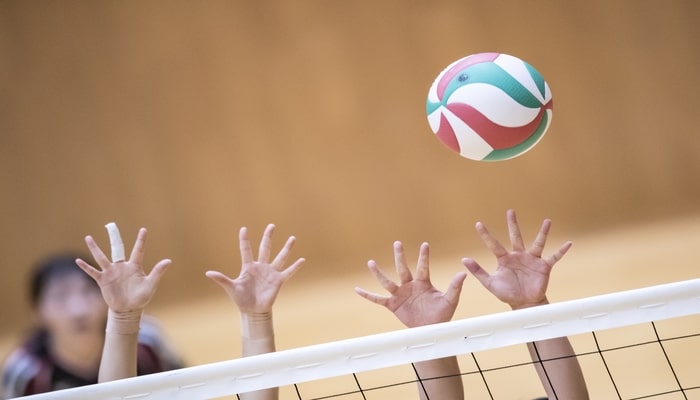
Volleyball is a dynamic sport that requires quick movements and high jumps.
Therefore, players are always at risk of injury.
In this article, we will explain the most common injuries that occur to volleyball players and how to deal with them.
目次
Common injuries for people playing volleyball, their causes, and how to deal with them
Ankle sprain (for people with foot pain)
Causes and Symptoms: Ankle sprains are one of the most common injuries for volleyball players. This occurs when the ankle becomes unstable when landing, causing the ankle to twist excessively in or out. It is characterized by swelling, pain, and discomfort when walking.
approach:
- Perform RICE treatment (Rest, Ice, Compression, Elevation).
- Consider using tape or braces to support your ankle.
- After the pain subsides, rehabilitation is performed to strengthen the ankle muscles.
Wrist injury (people with wrist pain)
Causes and Symptoms: Wrist injuries are most likely caused by impact when serving, spiking, or blocking. I have pain, swelling, and difficulty moving my wrist.
approach:
- Keep the injured wrist at rest and apply ice to reduce swelling.
- If necessary, use supports or tape under the supervision of a doctor.
- Perform appropriate exercises for wrist flexibility and strength.
Knee injury (people with knee pain)
Causes and Symptoms: Knee injuries include jumper’s knee (patellar tendonitis) and anterior cruciate ligament (ACL) injuries.
These are often caused by repeated jumps or sudden changes in direction. Symptoms include knee pain, swelling, and difficulty moving.
approach:
- Perform RICE treatment promptly.
- Use supports or taping to increase knee stability.
- Rehabilitation strengthens the muscles around the knee and increases flexibility.
Shoulder injury (people with shoulder pain)
Causes and Symptoms: Shoulder injuries are caused by the repetitive stress placed on the shoulder during spikes and serves. You will experience pain, limited movement, and decreased strength.
approach:
- It is important to keep the injured shoulder at rest.
- Apply cold therapy to reduce inflammation.
- Shoulder rehabilitation improves muscle balance and increases flexibility and strength.
In the unlikely event that you are injured, it is important to take appropriate measures immediately and seek professional diagnosis if necessary.
Adequate rest and gradual rehabilitation are essential for recovery from injury.
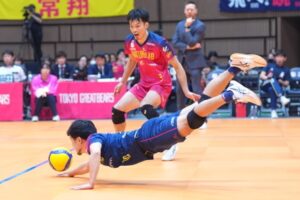
How to deal with and prevent injuries in volleyball
Volleyball is a sport that involves quick movements, high jumps, and intense ball strikes.
These movements place high physical demands on players and increase the risk of injury.
Proper preparation and caution are necessary to prevent injury.
Below are specific ways to prevent injuries while playing volleyball.
1. Proper warm-up
- Start with light aerobic exercise (such as jogging or skipping) that warms up your whole body.
- Keep your muscles supple by stretching and dynamic warm-ups, especially in areas commonly used in volleyball, such as your ankles, knees, and shoulders.
2. Strength training
- Strengthens the core of the body (abdominal muscles, back muscles) and increases stability.
- By training your leg muscles (quadriceps, hamstrings, and calves), you can improve your jumping power and make it easier to absorb the shock when you land.
- Strengthens shoulder and arm muscles and supports overhead movements.
3. Learn the correct techniques
- Learn basic techniques such as spiking, serving, and receiving correctly, and avoid putting unnecessary strain on yourself.
- Pay particular attention to your jumping and landing techniques to reduce the impact on your knees and ankles.
4. Use proper equipment
- Protect your feet and ankles by choosing volleyball-specific shoes with good support and cushioning.
- Use knee pads or ankle supports to provide additional protection if needed.
5. Adequate rest and recovery
- Get enough rest between practices and games to avoid excessive fatigue.
- After practice, cool down and stretch to help your muscles recover.
6. Nutrition and hydration
- Maintain your physical strength and recovery by eating a balanced diet and drinking enough water.
7. Physical condition management and self-evaluation
- Understand your body’s cues and if you are feeling more pain or fatigue than usual, take time to rest or seek professional advice if necessary.
Injury prevention is an essential element for continuous performance improvement while enjoying volleyball.
By practicing these precautions, you can significantly reduce your risk of injury in volleyball.

How to warm up for volleyball to prevent injuries
An effective warm-up is very important to prevent injuries in volleyball.
Warming up prepares your body for movement, improves performance, and reduces the risk of injury.
Below, we will introduce how to warm up for volleyball.
1. Light cardio exercise
Begin your warm-up with 5 to 10 minutes of light cardio to improve blood flow throughout your body. Jogging, skipping, or side stepping can be effective.
What is cardio exercise?
Cardio exercise is a type of aerobic exercise that strengthens the heart (cardiovascular system) and improves cardiopulmonary function.
This type of exercise is done continuously and primarily uses the large muscle groups of the body. Its purpose is to increase your heart rate and maintain that level over a long period of time.
Cardio exercise includes activities such as:
- Jogging or running : Regular jogging or running is a great cardio exercise for your heart. Doing it at a steady pace will improve your cardiovascular fitness.
- Cycling : Cycling outdoors or indoors on a stationary bike is an effective way to work your leg muscles and train your heart.
- Swimming : This is a full-body exercise that is particularly useful for improving cardiovascular fitness. The resistance of the water also improves muscle strength.
- Aerobics : Exercising to music is a fun way to get aerobic exercise and can help get your heart rate up.
- Hiking or walking : Hiking, especially in varied terrain, is a good form of cardio exercise. Walking fast on a flat path can also effectively train your heart.
2. Dynamic stretching
Perform dynamic stretches to warm up your muscles and increase flexibility.
Dynamic stretching involves stretching muscles while moving and includes the following movements:
- rotation of the hip joint
- Leg swing (back and forth, sideways)
- arm circle
- lunge walk
What is dynamic stretching?
Dynamic stretching is an active stretching method that stretches your muscles while moving your body.
This type of stretching is especially suitable for warming up before sports or exercise, warming up the muscles, increasing flexibility, and improving the range of motion (ROM) required for exercise. It’s the purpose.
Dynamic stretching example
- leg swing
- Warm up your lower back, glutes, hamstrings, and quadriceps by swinging your legs back and forth and side to side.
- Arm circle (arm rotation)
- By rotating your arms back and forth, you warm up the muscles around your shoulders and increase flexibility.
- Lunge walk (lunge walk)
- Stepping into lunges (deep steps with bent knees) activates the muscles in your lower body.
- Hip rotation (rotation of the hip joint)
- Rotate your hips in a circular motion while standing to improve flexibility and range of motion around your hips.
3. Volleyball-specific movements
By performing a warm-up that incorporates movements specific to volleyball, you can effectively prepare the muscles and joints necessary for actual play.
- light toss and catch
- Passing practice (forearm pass, overhead pass)
- Light spike approach practice
- Shadow play (acting without actually using the ball)
4. Core training
Core stability is very important in volleyball. Do short exercises that strengthen your core muscles, such as planks and side planks.
5. Practice on the court
We perform simulated plays on the court and make movements based on game situations.
This will finally warm up your muscles, joints, and nervous system for the actual play.
Warm-up points
- Warm up by gradually increasing the intensity.
- Move your whole body in a balanced manner, focusing specifically on the muscle groups you use.
- It is important to perform the movements accurately and stretch without straining.
- After warming up, remember to hydrate properly.
These warm-up methods will properly prepare your body and allow you to enjoy playing volleyball while reducing the risk of injury.
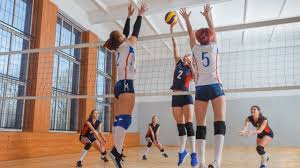
Have fun practicing volleyball while being careful not to get injured.
Because volleyball is a highly competitive and physically demanding sport, players are exposed to a variety of injury risks.
Preventing injuries is essential for players to enjoy their sport and improve their performance over the long term.
Below are some points to explain the importance of injury prevention in volleyball.
1. Maintaining long-term performance
When you get injured, it takes time to recover, and you are unable to practice or participate in games during that time.
Injury prevention allows players to continue developing their skills and contributing to their team.
2. Avoiding pain and discomfort
Injuries involve pain and discomfort. Especially severe injuries can affect your daily life.
By practicing injury prevention, players can avoid these unpleasant experiences and stay healthy.
3. Reducing medical costs
When you are injured, you will incur medical costs.
Severe injuries may require surgery and rehabilitation, and these costs can be high.
By taking precautions, you can avoid these additional costs.
4. Maintaining team strength
An injury to one player can affect the balance and performance of the entire team.
When all players stay healthy, the team can provide consistent strength and move toward achieving its goals.
5. Extend your sports career
Injuries can shorten a sports career, especially if playing at a competitive level.
Injury prevention allows players to enjoy their sport longer.
Practicing preventive measures
Injury prevention includes warming up properly, stretching, learning how to train, using the right equipment, and paying attention to your body’s signals.
You can also avoid unnecessary injuries by working on improving your technique.
In order to enjoy volleyball safely, injury prevention is extremely important.
When players, coaches, and parents understand and practice preventative measures, everyone can enjoy sports without injury.
If you get injured, you won’t be able to improve your volleyball skills, and above all, it won’t be fun.
Please practice the common volleyball injuries introduced here and how to deal with them, and continue to have fun practicing volleyball.
